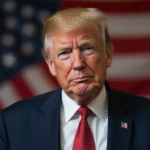Background on Donald Trump and His Trade Policies
Donald J. Trump, the 45th President of the United States, served from January 2017 to January 2021. Known for his business background and reality TV fame, Trump entered politics with a focus on “America First” policies. His trade policies have been marked by protectionist measures, including tariffs on various countries’ goods to protect American industries and jobs. Japan and South Korea, key U.S. allies in Asia, have been affected by these tariffs.
Trade Tensions and Reasons for Tariffs
The trade tensions between the U.S., Japan, and South Korea have escalated due to disagreements over trade practices. The U.S. has accused both countries of unfair trading practices, such as keeping tariffs low while imposing strict regulations on U.S. companies. These concerns led Trump to announce the 25% tariffs on various products imported from Japan and South Korea.
Trump’s Announcement of Tariffs
Tariff Details:
- Effective date: August 1, 2019
- Tariff rate: 25%
- Affected countries: Japan and South Korea
Communication Method:
Trump communicated his decision through letters posted on his social media platforms, addressing the leaders of Japan and South Korea. The letters stated that trade relations were “unfortunately far from being reciprocal.”
Reactions and Potential Impacts
The announcement has sparked concerns among businesses and policymakers in both countries. Industries such as automobiles, electronics, and agriculture could be significantly affected. The tariffs may lead to increased costs for consumers, retaliation from Japan and South Korea, and potential damage to the U.S.’s alliances in the region.
Key Questions and Answers
- What is the purpose of these tariffs? The U.S. aims to address what it perceives as unfair trade practices by Japan and South Korea, protecting American industries and jobs.
- When do these tariffs take effect? The tariffs will be implemented on August 1, 2019.
- Which countries are affected by these tariffs? Japan and South Korea are the primary targets of these 25% tariffs.
- How might these tariffs impact businesses and consumers? Industries such as automobiles, electronics, and agriculture could face increased costs. Consumers may also experience higher prices for certain goods.
- What are the potential consequences for U.S. alliances in Asia? The tariffs could strain relationships with Japan and South Korea, potentially leading to retaliation and damaging regional alliances.






